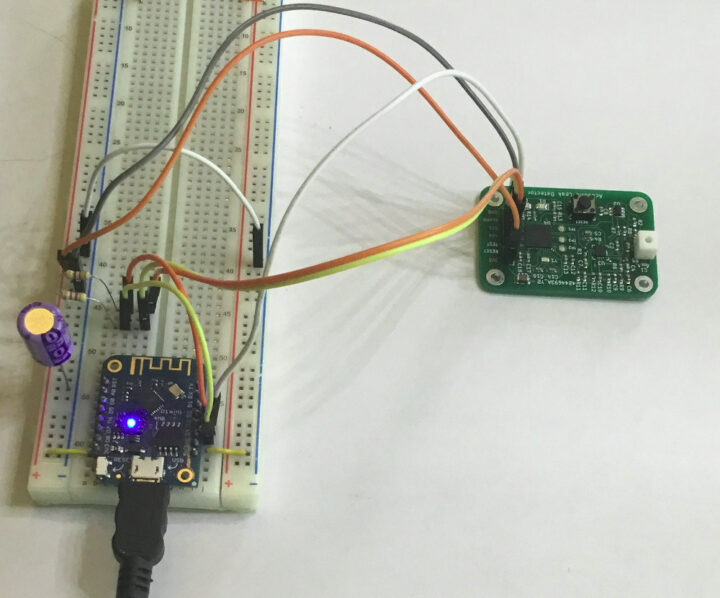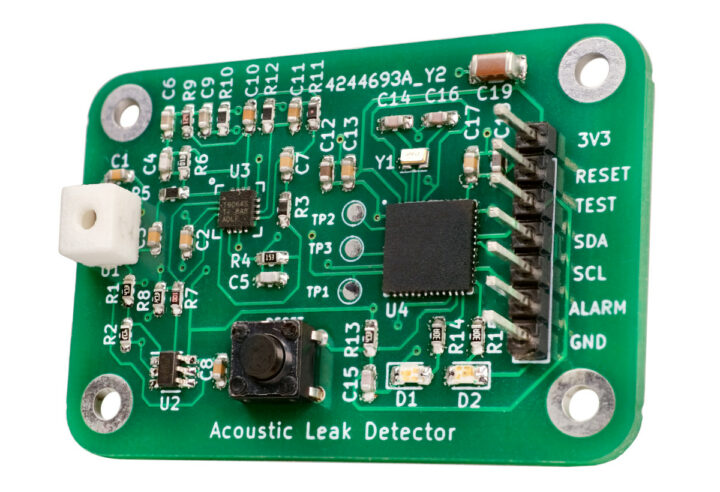The AquaPing is an open-source hardware, ultra-low power acoustic water leak detector sensor based on Texas Instruments MSP430 microcontroller and a microphone that can detect leaks without having to do any plumbing, instead capturing audio for water leak detection, and it even works for leaks behind walls.
All signal processing and analysis occur on the MSP430 MCU, so no audio is streamed to the cloud and eavesdropping is impossible, plus the sensor only captures high frequencies out of the range of normal conversations, so eavesdropping is not feasible, plus those higher frequencies are also said to provide highest sensitivity and reliability.
- MCU – Texas Instruments MSP430FR5994 microcontroller to perform FFT spectral analysis (10x faster/efficient than ARM-Cortex M0+)
- Audio capture – MEMS microphone covered by a small rectangular plastic structure to form a Helmholtz resonator.
- Minimum detectable leak rate – 0.01 gpm (gallon per minute) depending on stand-off distance
- Environmental training time – User configurable: 10 seconds – 4 minutes
- Host connection – 7-pin header with I2C, 3.3V, GND, Alarm, and Test signals
- Misc – Reset button
- Power Supply – 1.8 to 3.3V
- Battery Life – “Sub-Hz sampling rates and exceptional battery life”
- Dimensions – 48 x 33mm

As mentioned in the introduction, the project is open-source hardware, and you’ll find the KiCAD schematic and layout files, MSP430 firmware source code, an example Arduino Sketch using Lolin/Wemos D1 mini ESP8266 board as the host and ThingSpeak IoT platform, a 7-page user guide with design description and I2C interfacing instructions, a 2-page report describing tests with simulated water leaks behind drywall, and short engineering brochure on Github.
The Aquaping is especially well suited for pressurized water escapes from a seam, crack, or loose fitting on plumbing, where high-frequency acoustics are emitted, as these signals can travel over 9 meters in free space and be detected by a sensor placed several meters from the leak. You can see the Aquaping acoustic leak detector module in action in the video below.
Microphonon has launched the module on Crowd Supply with a lowly $4,000 funding target, but that must be quite a small niche market so that should explain it. There’s a single reward requiring an $89 pledge for the AquaPing to which you’d need to add $8 for shipping to the US and $18 to the rest of the world.

Jean-Luc started CNX Software in 2010 as a part-time endeavor, before quitting his job as a software engineering manager, and starting to write daily news, and reviews full time later in 2011.
Support CNX Software! Donate via cryptocurrencies, become a Patron on Patreon, or purchase goods on Amazon or Aliexpress





